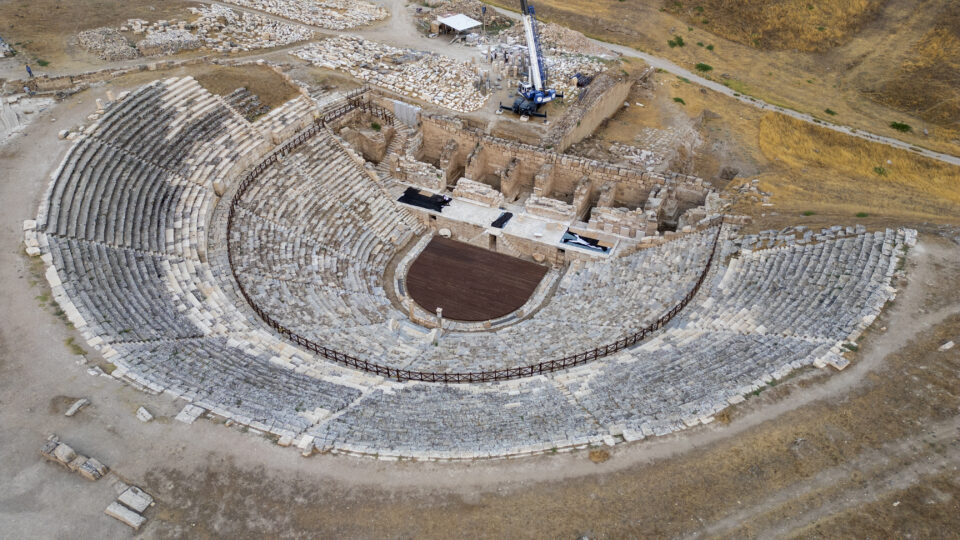Anatolia, where various civilisations have crossed paths since prehistoric times, established some of the oldest settlements on earth, and experienced many firsts in human history, boasts unique treasures from these ancient cultures today. The richness of these lands is gradually being brought to light with excavations that span 12 months under the leadership of the Ministry of Culture and Tourism. This year, experts made significant discoveries that will impact the world of history again. In parallel, efforts are ongoing to repatriate artefacts illegally taken abroad.
Golden Age of Turkish Archaeology
Conducting numerous archaeological excavation and restoration projects to ensure the sustainability of its cultural heritage, Türkiye has emerged as a captivating global stronghold for archaeological works. The country is set to accomplish as much work in the next four years as has been done in the past 60 years. In this context, 2024 is declared the “Golden Age of Turkish Archaeology.” The number of archaeological studies in the country, which was 670 in 2021, first increased to 720 in 2023 and is expected to rise further to 750 in 2024 and reach 800 by 2026. Additionally, conservation studies and visitor arrangement works for excavation sites are carried out in Türkiye. Let’s look at some of the remarkable artefacts uncovered in Türkiye during the first eight months of 2024.
Archaeological Highlights in 2024
This year, one of the most remarkable finds was the Scylla statues, discovered in the ancient city of Laodicea in Denizli. The extraordinary sculptures included the head and hand of the man-eating monster Scylla, the body of Odysseus, two upper-body statues belonging to his companions who were attacked and killed by wild dogs around Scylla’s waist, and Odysseus’ ship’s bow. They stand out with their well-preserved original paint and baroque style of the Hellenistic period. UNESCO site Aphrodisias in Aydın was also on the agenda with a giant Zeus head sculpture. The nearly 2,000-year-old statue was found intact with minimal damage and fascinating details. Another notable discovery was from Kahramanmaraş. A 13,000-year-old bone sewing needle was found in the Direkli Cave, regarded as “the foundations of the city’s current textile structure in archaeological settlements”.
Karahantepe, one of the world’s oldest Neolithic sites, shone again with the first discovery to depict a wild animal in motion. Archaeologists have uncovered a carved figure of a running wild donkey on a stone slab at the site, excavated within the scope of the “Taş Tepeler Project” in Şanlıurfa. In the ancient Hittite city of Kayalıpınar in Sivas, 3,900-year-old handprints believed to date back to the Assyrian trade colonies have also been found, offering a rare chance to see marks left by individuals nearly four millennia ago. Another attractive find was a 3,600-year-old bronze dagger belonging to the Minoan civilisation of Crete. Discovered by archaeologist divers off the coast of Kumluca in Antalya, the dagger makes the archaeology world reconsider the historical trade routes and cultural interactions of the Mediterranean.
2,000-year-old statues of Zeus and Aphrodite have been found in the ancient Aspendos, one of Pamphylia’s most magnificent cities. During the excavations in Andriake, the port of the ancient town of Myra in Lycia, decorative panels made using the millefiori technique were unearthed. The artefacts are the first to use glasswork in this technique in Türkiye. Also, three bronze shields and a bronze helmet dedicated to Haldi, the chief god of the Urartians, were discovered in the ancient city of Ayanis in Van. The artefacts reflect the richness and high level of Urartian metal craftsmanship. The excavations spread across every corner of Türkiye continue to reveal many more artefacts, shedding light on history dating back thousands of years.
Cultural Recoveries of the Year
Türkiye also remains steadfast in pursuing the repatriation of looted artefacts from abroad. This commitment was further strengthened by notable repatriations this year. The country, sustaining its legal and diplomatic battle to bring more works to its homeland, has recently repatriated 14 archaeological and ethnographical artefacts back to the country of origin from the United States. Among the recovered cultural artefacts are two bronze heads, a giant bronze statue from the ancient city of Boubon in Burdur, various ceramic works, coins and a jewellery piece from different periods, and two Ottoman-era daggers.
www.goturkiye.com

